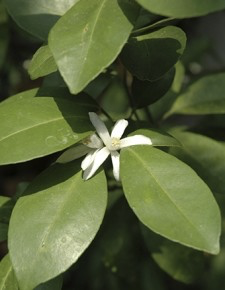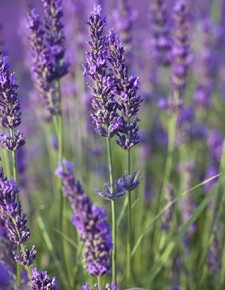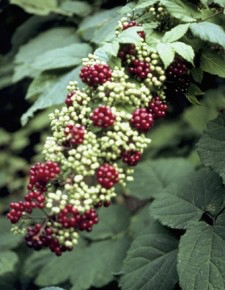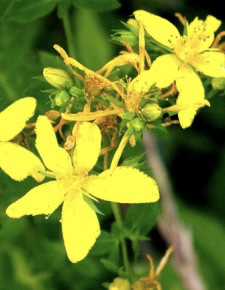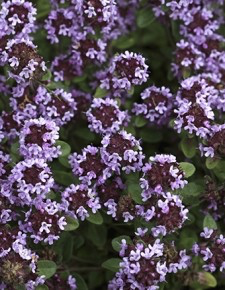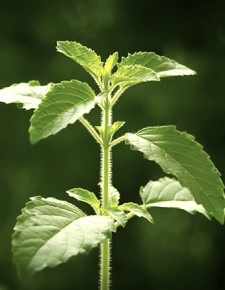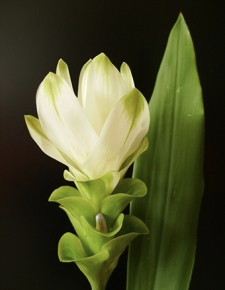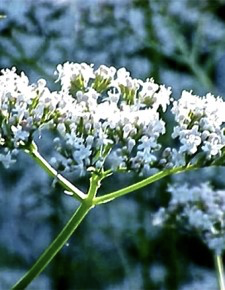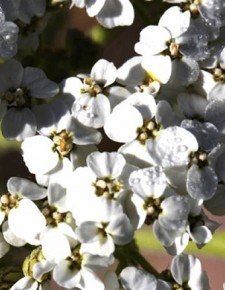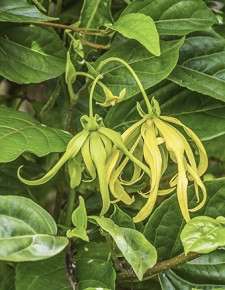Neem Oil – Skin & Pest Control
Use Neem Oil to Improve Your Skin — and Even Fight Pests
from Dr. Axe
Neem oil is a naturally occurring pesticide found in seeds from the neem tree. It is yellow to brown, has a bitter taste, and a garlic/sulfur smell. While it doesn’t sound very attractive, neem oil can be very beneficial by providing an all-natural pesticide that controls both pests and diseases.
Loaded with nutrients, neem oil is also used in natural skin care products because it contains high levels of antioxidants that help protect the skin from environmental damage. Neem also helps fight free radical damage in the skin because it contains carotenoids, which provide high antioxidant compounds. As a result, cold-pressed neem oil and neem extracts are widely used in cosmetics such as soap, hair products, cosmetics, hand creams and pet shampoos.
Neem oil is usually comprised of a mixture of components. Azadirachtin is the most active component and is used for for repelling and killing pests. After the extraction of azadirachtin, the portion left over is called clarified hydrophobic neem oil. As reported by Current Science, it works as an effective non-toxic insect control agent to agriculture.
Since neem is also especially high in important fatty acids and vitamin E and can quickly penetrate outer layers of skin, it is extremely effective in healing dry and damaged skin.
4 Benefits of Neem Oil
1. Combats Bed Bugs
The Environmental Protection Agency has reported that neem oil, when combined with with certain approved agents, can be safe and effective against bed bugs both at home and in commercial environments. Performance trials conducted show that neem oil helps control bed bug adults, nymphs and eggs.
The EPA issued registrations for two new products: TER-TRU1, containing 5.5 percent cold-pressed neem oil, is a ready-to-use formulation for spot treatment by residential and commercial users; TER-CX1, containing 22.0 percent cold-pressed neem oil, is a concentrate formulation for commercial use in the treatment of whole rooms.
2. Serves as a Natural Insecticide
Neem is considered a safe, naturally occurring insecticide. The Journal of Insect Science notes that
… control programs using conventional insecticides to target anthropogenic mosquito habitats are very expensive because these habitats are widespread, particularly in cities of most African countries. Additionally, there are serious environmental concerns regarding large-scale application of most conventional insecticides. Clearly there is a need for alternative methods that are more effective, less expensive, and environmentally friendly. One such method would be the application of preparations made from parts of the neem tree, Azadirachta indica A. Jussieu (Sapindales: Meliaceae).
Azadirachtin is the important ingredient in neem oil that can help prevent unwanted pests from destroying plants. While there are other ingredients in neem oil spray that show insecticidal properties, azadirachtin is responsible for 90 percent of the effect of neem oil insecticide.
EPA modeling of potential residues of neem oil following terrestrial treatments indicated that residues declined rapidly between applications and following the final application. Neem products do not provide absolute insect control; however, frequent applications can reduce pest populations dramatically by repelling them and inhibiting their larval development, growth, fertility, mating and egg laying, and deterring feeding.
How does it work? A solution of neem oil smothers insect pests and has antifungal properties as well. The oil coats the plant’s surface and prevents the germination of fungal spores. Neem oil can also be used as a safe, natural leaf polish, though some plants may be sensitive. It is always best to test first.
The American Orchid Society also reports that neem has been shown to ward off sand flies and mosquitoes, aiding in control of the spread of diseases such as malaria. It has been used to treat lice and scabies, and tea brewed from the leaf of the tree has been used for termite control. Neem, in the form of leaves, can be placed in the pockets of woolen clothing to fend off moths and added to stored grains and beans to help keep insects out.
Neem products are often used as a cattle-feed supplement to kill parasites. Because neem is relatively inexpensive, it’s even has been helpful to reduce post-harvest losses in developing countries.
3. Offers Wide-Ranging Skin Care — Smoothes Wrinkles, Stimulates Collagen, Relieves Dry Skin & Reduces Eczema and Acne
The Department of Biochemistry and Biotechnology at Kwame Nkrumah University of Science and Technology (KNUST) states that neem oil is rich in essential fatty acids (EFAs), triglycerides, vitamin E and calcium. Because of its EFAs and vitamin E, neem oil penetrates deep within the skin to heal the miniscule cracks brought on by severe dryness. Fatty acids present in the neem kernel oil are oleic acid (52.8 percent), linoleic acid (2.1 percent), palmitic acid (12.6 percent) and stearic acid (21.4 percent).
The fatty acids and vitamin E found in neem oil are easily absorbed into the skin without leaving the skin greasy. Once absorbed, these powerful properties work to rejuvenate the skin’s cells and restore elasticity. Benefit-rich vitamin E acts as a free radical scavenger, by hindering the oxidizing processes in the skin. It promotes soft and supple skin, helps in reducing old scars and promotes healing.
Need also stimulates collagen production, good for aging skin. Indeed, if used regularly, neem may help smooth wrinkles and fine lines while helping to prevent the signs of aging. Neem oil may prove to be a natural remedy for eczema symptoms — including dry, red, itchy skin — and be very soothing, but it will not cure the root causes for eczema.
There are anti-inflammatory compounds known as nimbidin and nimbin that help relieve swelling and redness. another compound known as quercetin supports the body’s ability to respond to inflammation by inhibiting both the manufacture and release of histamine and other irritants.
KNUST also states that neem oil, when used as a soap, is antimicrobial and helps people suffering from skin diseases such as acne because it can help to soothe irritation and inflammation by removing bacteria from the surface of the skin; therefore, preventing more break-outs.
Neem oil has been used in traditional folk medicine and as a home remedy for acne because of the aspirin-like compound that helps rid the skin of bacteria. It also helps reduce redness and inflammation. The high fatty-acid content in neem oil is said to prevent and treat scars from acne and is non-comedogenic. The leaves are also an excellent exfoliant that can be used in a facial mask to pull out impurities and tighten pores.
4. Mosquito Repellent
Neem oil makes for a great natural mosquito repellent that is safe to use. As reported in the Journal of the American Mosquito Control Association, when 2 percent neem oil was mixed with coconut oil, then applied to the exposed body parts of human volunteers, it provided complete protection for approximately 12 hours from the bites of all anopheline species. They claim that the application of neem oil is safe and can even be used for protection from malaria in endemic countries.
How to Buy & Use Neem Oil
It is important that you read labels carefully before making a purchase since many pre-mixed versions have been refined. You want it to be yellow in color, cloudy, and have an odor similar to garlic and sulfur. Look for 100 percent pure neem oil. It’s also helpful to use organic neem oil because this ensures that it’s not contaminated with solvents or petrochemicals that may have been used in the purification process.
Commercial neem oil sprays often contain a refined neem oil extract, usually smell better and are ready to use; however, making your own is much more efficient and costs less. This is more important because neem oil extract has a lower concentration of azadirachtin, and azadirachtin is the ingredient that affects insects.
If we are talking about a pesticide, just how safe is it then? Neem is considered harmless to humans, animals, birds, beneficial insects and earthworms, and has been approved by the U.S. Environmental Protection Agency for use on food crops and bed bugs. Azadirachtin and other active ingredients in the neem seed have insecticidal properties that are effective against a broad spectrum of insects, many mites and nematodes, and even snails and fungi, and do not seem to generate resistance in the pests they affect.
Regarding plants, The American Orchid Association tell us that oil solutions should never be applied to plants during hot weather (85° F [29° C] or warmer) or in direct sunlight. To prevent burning of tissues, treated plants should be shaded until the application is dry. Avoid strong or excessive amounts of detergent or use of ammonia-based cleaners, as these may damage your plants.
Store your neem oil in the refrigerator, or in an area that is cool and dark so that it will keep longer. It should keep for a year or two. Make sure you label it appropriately wherever you choose to store it. However, neem oil can solidify at low temperatures. You can simply place the container in warm water to get it back to a liquid form for use, but make sure it doesn’t get too warm, (85 degrees F/30 degrees C or lower), since heat destroys the azadirachtin (the most effective component).
Because neem oil does not mix with water, you will need to add an emulsifier such as a small amount of soap, detergent or shampoo. While you could use any liquid soap, it’s safest to use a proper insecticidal soap that will not hurt plants. Household soaps may burn or harm sensitive plants.
The EPA also reports that based on the data available, it has been determined that there are no unreasonable adverse effects to the U.S. population and the environment when label instructions are followed and good agricultural practices are employed. Laboratory studies indicate that the active ingredient is not toxic following oral, inhalation or dermal exposure.
The most likely human exposure to cold-pressed neem oil will occur via dietary consumption to treated fruits, seeds or leafy vegetables.
History and Interesting Facts
The neem tree, Azadirachta indica, (also known as Indian lilac or margosa), is thought to have originated in India or Burma. Neem is a large, fast-growing evergreen that can reach approximately 40 to 80 feet in height. It is drought resistant, heat tolerant and may live up to 200 years! It grows in many Asian countries as well as tropical areas of the Western hemisphere. Neem oil, which is extracted from the tree’s seeds, has been used for its medicinal and insecticidal properties for more than 4,000 years.
The bark, leaves and seeds are used to make medicine. Less frequently, the root, flower and fruit are also used. The leaves are generally available year-round as the tree is evergreen except during severe droughts or if exposed to frost.
The major active constituents in neem are terpenoids, such as azadirachtin, which are considered to be antimicrobial acting as an insect repellant among many other actions. People in the tropics sometimes chew neem twigs instead of using toothbrushes, but this can cause illness; neem twigs are often contaminated with fungi within two weeks of harvest and should be avoided.
The EPA goes on to explain that cold-pressed neem oil is a mixture of several C26 terpenoids that are naturally occurring organic compounds. Azadirachtin, the most common terpenoid in cold-pressed neem oil, is a federally registered active ingredient pesticide. Cold-pressed neem oil also contains steroids, fatty acids and a number of essential oils that are commonly found in a normal diet. These substances are generally recognized as safe (GRAS) by the United States Food and Drug Administration.
Neem Oil Recipes
Neem Oil Wrinkle Cream With Lavender
Ingredients:
- ½ ounce of pure, organic neem oil
- 8 ounces of organic jojoba oil
- 4–5 drops pure lavender oil
Directions:
Place ingredients in a cosmetic container or small cosmetic bottle. Mix or shake well. Make sure all ingredients are well blended. Apply, as a moisturizer, to your to skin liberally.
For skin problems, apply directly onto the skin two or three times a day.
You should not use undiluted neem oil on your skin. Always try a very small amount on a small area of skin to make sure your skin does not have a negative reaction.
Neem Oil Foliar Spray Solution (from the American Orchid Society and suggested by growers)
Ingredients:
- 1 teaspoon neem oil
- ½ teaspoon plant-safe liquid soap
- 1 quart warm water
Directions:
Place in a plastic spray bottle and make sure to mix all ingredients well, shaking intermittently to ensure they remain well mixed.
Because the oil smothers insect pests, be sure to completely cover all plant surfaces for maximum effectiveness. Some sources indicate that the mixture begins to break down after eight hours, so a fresh batch should be used at every application.
The insect-controlling properties of neem lose effectiveness over time, especially in warmer temperatures, and may be washed off during watering or by rainfall, so repeat sprayings at weekly to biweekly intervals are needed to control successive generations of pests. In addition, it is useful to keep up manual removal of bugs as part of the control regime.
Risks and Side Effects
It is important to consider the appropriate dose of neem based on the user’s age, health, and any other conditions. There is not enough scientific information to determine an appropriate range of doses for neem at this time; however, keep in mind that you should always consult your doctor before using any natural products, especially children, pregnant women and nursing mothers. Be sure to follow relevant directions on product labels.
While neem leaf extracts appear to be safe, it is possible that unknown interactions exist. If you take medication, always discuss the potential risks and benefits of adding a new supplement with your doctor or pharmacist.

